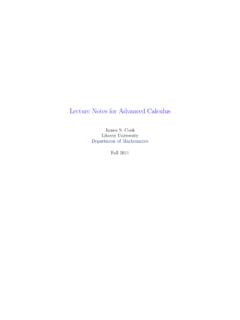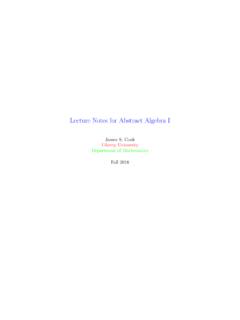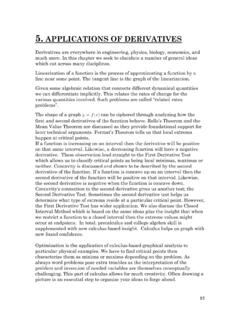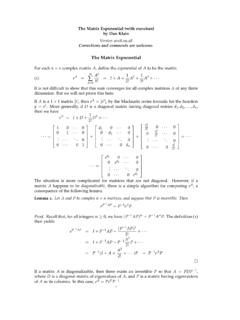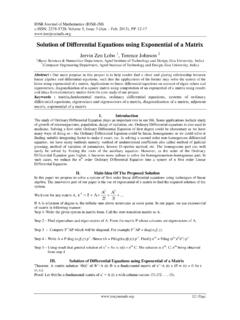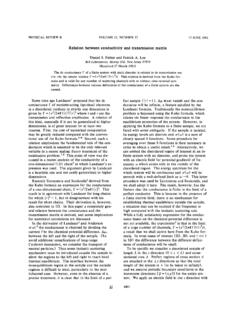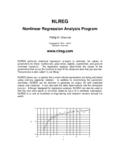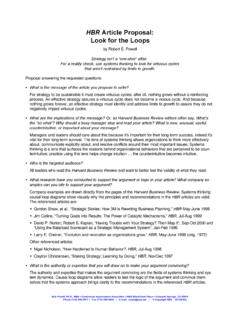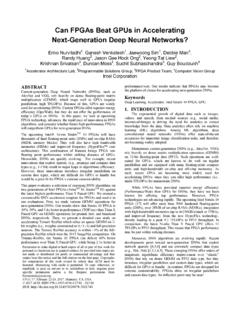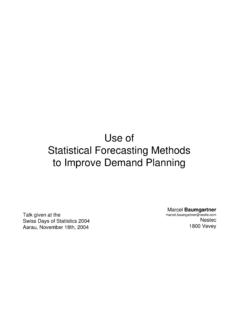Transcription of Lecture Notes for Linear Algebra
1 Lecture Notes for Linear AlgebraJames S. CookLiberty UniversityDepartment of Mathematics and PhysicsFall 20092introduction and motivations for these notesThese Notes should cover what is said in Lecture at a minimum. However, I m still learning so Imay have a new thought or two in the middle of the semester, especially if there are interestingquestions. We will have a number of short quizzes and the solutions and/or commentary aboutthose is not in these Notes for the most part. It is thus important that you never miss class. Thetext is good, but it does not quite fit the Lecture plan this probably would have changed it if I realized earlier but alas it is too late. Fortunately, thesenotes are for all intents and purposes a text for the course. But, these Notes lack exercises, hencethe required text. The text does have a good assortment of exercises but please bear in mind thatthe ordering of the exercises assigned matches my Lecture plan for the course and not the text , there are a couple topics missing from the text which we will cover and I will write up somestandard homework problems for those usual there are many things in Lecture which you will not really understand until later.
2 I willregularly give quizzes on the material we covered in previous lectures. I expect you to keep up withthe course. Procrastinating until the test to study will not work in this course. The difficulty andpredictability of upcoming quizzes will be a function of how I percieve the class is following the homework is doing the course. I cannot overemphasize the importance of thinkingthrough the homework. I would be happy if you left this course with a working knowledge of: how to solve a system of Linear equations Gaussian Elimination and how to interpret the ( ) concrete and abstract matrix calculations determinants real vector spaces both abstract and concrete subspaces of vector space how to test for Linear independence how to prove a set spans a space coordinates and bases column, row and null spaces for a matrix basis of an abstract vector space Linear transformations3 matrix of Linear transformation change of basis on vector space geometry of Euclidean Space orthogonal bases and the Gram-Schmidt algorthim least squares fitting of experimental data best fit trigonmetric polynomials (Fourier Analysis) Eigenvalues and Eigenvectors Diagonalization how to solve a system of Linear differential equations principle axis theorems for conic sections and quadric surfacesI hope that I have struck a fair balance between pure theory and application.
3 The treatment ofsystems of differential equations is somewhat unusual for a first course in Linear Algebra . No apolo-gies though, I love the example because it shows nontrivial applications of a large swath of thetheory in the course while at the same time treating problems that are simply impossible to solvewithout theory. Generally speaking, I tried to spread out the applications so that if you hate thetheoretical part then there is still something fun in every chapter. If you don t like the applicationsthen you ll just have to deal (as my little sister says)Before we begin, I should warn you that I assume quite a few things from the reader. These notesare intended for someone who has already grappled with the problem of constructing proofs. Iassume you know the difference between and . I assume the phrase iff is known to assume you are ready and willing to do a proof by induction, strong or weak. I assume youknow what , , , and denote.
4 I assume you know what a subset of a set is. I assume youknow how to prove two sets are equal. I assume you are familar with basic set operations suchas union and intersection (although we don t use those much). More importantly, I assume youhave started to appreciate that mathematics is more than just calculations. Calculations withoutcontext, without theory, are doomed to failure. At a minimum theory and proper mathematicsallows you to communicate analytical concepts to other like-educated of the most seemingly basic objects in mathematics are insidiously complex. We ve beentaught they re simple since our childhood, but as adults, mathematical adults, we find the actualdefinitions of such objects as or are rather involved. I will not attempt to provide foundationalarguments to build numbers from basic set theory. I believe it is possible, I think it s well-thought-out mathematics, but we take the existence of the real numbers as an axiom for these Notes .
5 Weassume that exists and that the real numbers possess all their usual properties. In fact, I assume , , , and all exist complete with their standard properties. In short, I assume we havenumbers to work with. We leave the rigorization of numbers to a different Gauss-Jordan systems of Linear equations .. Gauss-Jordan algorithm .. classification of solutions .. applications to curve fitting and circuits .. conclusions .. 272 matrix basic terminology and notation .. addition and multiplication by scalars .. matrix multiplication .. elementary matrices .. invertible matrices .. systems of Linear equations revisited .. for solving many systems at once .. how to calculate the inverse of a matrix .. all your base are belong to us ( and that is) .. matrices with names .. and antisymmetric matrices .. laws for matrices .. and triangular matrices.
6 Applications .. conclusions .. 603 determinants and geometry .. cofactor expansion for the determinant .. adjoint matrix .. Kramer s Rule .. properties of determinants .. examples of determinants .. applications .. conclusions .. 824 Linear definition and examples .. subspaces .. spanning sets and subspaces .. Linear independence .. bases and dimension .. to calculate a basis for a span of row or column vectors .. basis of a solution set .. is dimension? .. general theory of Linear systems .. applications .. conclusions .. 1275 Linear examples of Linear transformations .. matrix of a Linear operator .. composition of Linear transformations .. isomorphism of vector spaces .. change we can believe in (no really, no joke) .. of basis for Linear transformations on 1.. matrices and invariant quantities for abstract Linear operators.
7 Applications .. conclusions .. 1486 Linear Euclidean geometry of .. orthogonality in 1.. orthogonal complements and projections .. the closest vector problem .. inconsistent equations .. least squares analysis .. least squares problem .. least squares .. orthogonal transformations .. inner products .. of inner-products .. analysis .. 194 CONTENTS77 eigenvalues and geometry of Linear transformations .. definition and properties of eigenvalues .. eigenvalue properties .. real eigenvector examples .. complex eigenvector examples .. Linear independendence of real eigenvectors .. Linear independendence of complex eigenvectors .. diagonalization .. calculus of matrices .. introduction to systems of Linear differential equations .. the matrix exponential .. analysis for matrices .. formulas for the matrix exponential.
8 Solutions for systems of DEqns with real eigenvalues .. solutions for systems of DEqns with complex eigenvalues .. geometry and difference equations revisited .. difference equations vs. differential equations .. conic sections and quadric surfaces .. quadratic forms and their matrix .. intertia tensor, an application of quadratic forms .. 253I sections for future courses or bonus work2558 Vector Spaces over complex matrix calculations .. inner products .. Hermitian matrices .. 2579 Additional minimal polynomial .. quotient spaces .. tensor products and blocks .. Cayley-Hamiliton Theorem .. singular value decomposition .. spectral decomposition .. QR-factorization .. 2598 CONTENTS10 Multilinear dual space .. double dual space .. multilinearity .. tensor product .. forms .. determinants done right .. 26111 Infinite Dimensional Linear norms in infinite dimensions.
9 Examples .. differentiation in finite dimensions .. differentiation in infinite dimensions .. 26312 appendix on finite sums265 Chapter 1 Gauss-Jordan eliminationGauss-Jordan elimination is an optimal method for solving a system of Linear equations. Logicallyit may be equivalent to methods you are already familar with but the matrix notation is by farthe most efficient method. This is important since throughout this course we will be faced withthe problem of solving Linear equations. Additionally, the Gauss-Jordan produces thereduced rowechelon form(rref) of the matrix. Given a particular matrix the rref is unique. This is of particularuse in theoretical systems of Linear equationsLet me begin with a few examples before I state the general the following system of 2 equations and 2 unknowns, + = 2 = 0 Adding equations reveals2 = 2hence = 1. Then substitute that into either equation to deduce = 1. Hence the solution(1,1)isuniqueExample the following system of 2 equations and 2 unknowns, + = 23 + 3 = 6We can multiply the second equation by1/3to see that it is equivalent to + = 2thus our twoequations are in fact the same equation.
10 There are infinitely many equations of the form( , )where + = 2. In other words, the solutions are( ,2 )for all .Both of the examples thus far 1. GAUSS-JORDAN ELIMINATIONE xample the following system of 2 equations and 2 unknowns, + = 2 + = 3 These equations are inconsistent. Notice substracting the second equation yields that0 = 1. Thissystem has no solutions, it isinconsistentIt is remarkable that these three simple examples reveal the general structure of solutions to linearsystems. Either we get a unique solution, infinitely many solutions or no solution at all. For ourexamples above, these cases correspond to the possible graphs for a pair of lines in the plane. Apair of lines may intersect at a point (unique solution), be the same line (infinitely many solutions)or be paralell (inconsistent).1 Remark is understood in this course that , , , , , , , , , are in . I will not belabor thispoint. Please ask if in of - Linear equations in -unknownsLet 1, 2.
